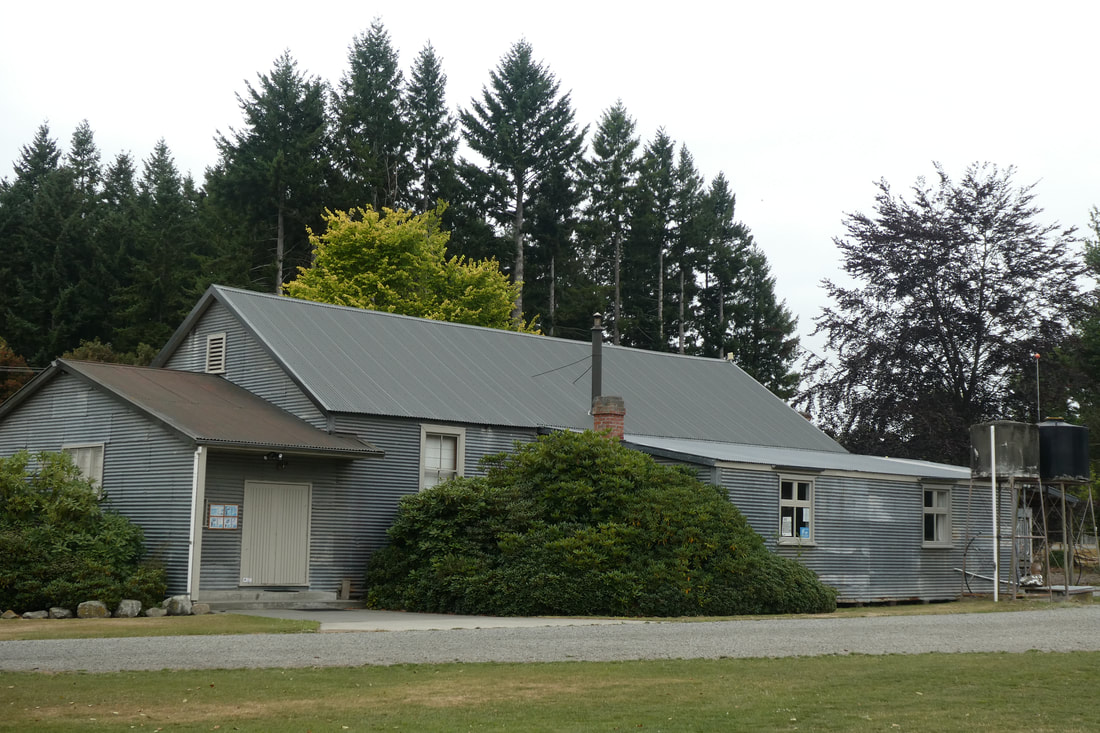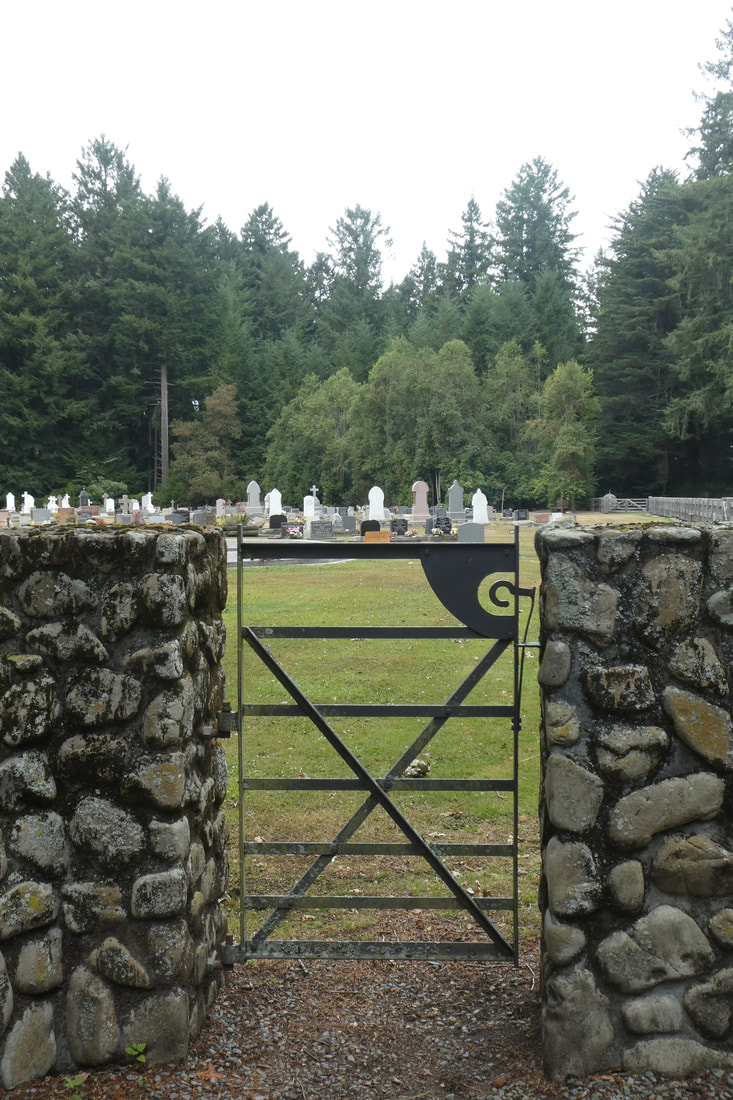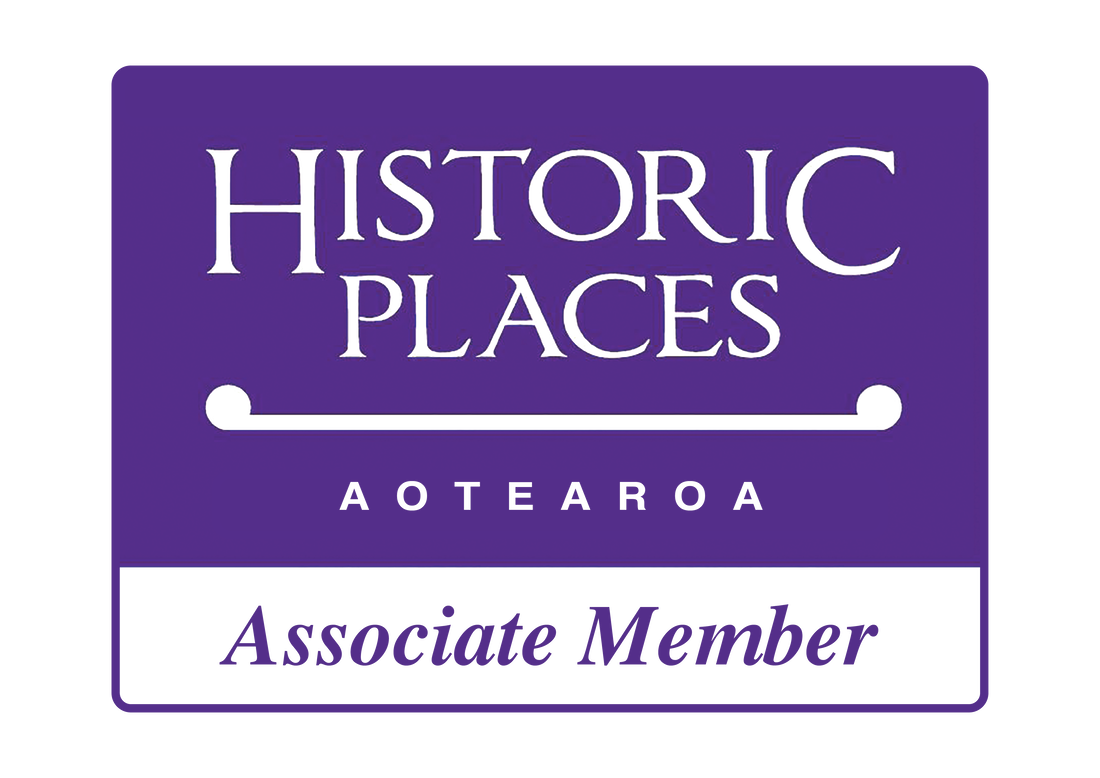|
St John’s Anglican Church on Wai-iti Rd in Highfield is not an old church but it is a handsome one.
Behind the church we see today stands the original red brick Sunday school building. Over the years this evolved to become the church. Even though it has been replaced it still enjoys a busy life as a church hall. The new one was built in 1949 in a classic style. It was opened in November 1951. The square tower is a notable feature, topped with an iron cross and weather vane, this rises above the battlements and gives the church its English character. Constructed by local builders the concrete and plaster exterior walls have been recently painted in a discreet taupe with white detailing. The repeated crests around the top of the tower have been nicely highlighted and are another appealing feature. They include the St John’s cross, St George’s Anglican cross and the Trinity shield. The slate roof is also beautiful and makes you think the church is older than it is. The interior of the church is traditional, quite simple compared to churches of previous eras. The interior has a comfortable, friendly and practical feel to it. Nice and solid, it is decorated with white walls, blue carpet and tapestry hangings. The ceiling is of dark wood and rises to the rafters high above the congregation. The original pulpit, gifted by the Tonkin family, has been brought across from the old church as was the lovely old Christening font, gifted by the Mothers Union. The stained glass windows are deceptively simple and add plenty of light. At the front of the church you can find another of Gypsy Poulstons wonderful stained glass windows, this one was dedicated in 1976. Her husband Eddie Poulston sculpted the modern crucifix which compliments Gypsy’s window beautifully. The church also has an organ, keyboard to one side with the pipes on the opposite wall and this was made by the South Island Organ Company here in Timaru. Karen Rolleston
0 Comments
The establishment of a settlement at Woodbury was well underway by 1880, most of the farmland around the area had been taken up and was being developed. The population of the district was greater than it is today and the needs of the growing community needed to be acted upon.
There is no record of the election of the first Domain Board but minutes show their first meeting was held on March 2nd 1880 at the Woodbury Hotel. At this meeting it was proposed that a generous amount of land be set aside to be used as an education reserve and recreational area for the community. In total some 55 hectares of unfenced treeless tussock land was earmarked for the project. To raise the money required for development much of the land was leased out with some of it planted in trees. Over the years that followed the Board judiciously used the income from rents received to carry out their planned improvements and help with ongoing maintenance. Although this was a slow process, in the long run it has proved a sustainable one and in recent years the Board has had sufficient income from these farm rentals and the sale of matured timber to carry out the necessary work renewing fences, piping a water supply, replanting of trees and the upgrading of its buildings as well as its sports facilities. The charming tin clad Woodbury Hall we see today was built as a Coronation Library Hall in 1911. Trees were felled and the timber cut for use in building the hall with the surplus wood being on sold. The official opening was on December 14th the same year. One of the first major items purchased was a grand piano which lasted till it was replaced with a more robust upright piano in 1963. This rustic country Hall has had been enjoyed by many users and has had many additions approved and instigated by the Board as ongoing improvements over the years. Power and lighting were installed in 1925 and a Ball was held to celebrate the switching on of the electricity. It still remains well used by the local community and is available to be hired out for functions including country weddings and the like. Karen Rolleston. Most of my notes about the history came from the Woodbury Domain and Cemetery boards’ booklet. In the township of Woodbury, just a few kilometres from Geraldine, you will find a beautiful Anglican church nestled into a yard surrounded by some large trees and a lawn. It is enclosed by a handsome stone and boulder wall with charming wooden gates along both road frontages. Some recent pruning suggests there are not as many trees as there once were and this opens up views of the church nicely.
In November, 1877 a public meeting to consider the erection of a church was held and by March 1879, St Thomas's Church was completed and consecrated by the Bishop of Christchurch. Tripp is a familiar name in Woodbury. A well-known pioneer family whose descendants came to New Zealand in 1855, they settled in the area and made their home at Orari Gorge Station. Descendants of the family still live there today. This original part of the church was constructed of wood on concrete foundations and its form reflects the Norman style of architecture commonly used in churches about Devon, England, where the Tripps emigrated from. A chancel and tower were added in 1926 made of local stone and attached to the old wooden building. The large tower was named as a memorial to Charles George and Ellen Shephard Tripp and the Nave, built in 1938, was named for his children, Charles Howard and Eleanor Howard Tripp. It was designed by Cecil Wood and completed by local builders, Herbert Cooling and Oswald Scott of Woodbury. Oak for the carved furniture and for memorial tablets is from the Tripp homestead at Orari Gorge. Building materials feature local stones and boulders, as do many of these local memorial churches. The roof is of purple hued Welsh slate. The church also features seven beautiful stained glass lancet windows. Wonderful destination for a Sunday drive or to attend a service, I understand the church is open to be viewed by passers-by and friendly visitors alike. Karen Rolleston Follow the signs just a few km’s north of Geraldine and you will find the small settlement of Woodbury. Originally named Waihi Bush, the town was first established by Robert Taylor and Frederick Flatman in 1866 to service the saw milling and farming industries that were developing around the area. The village grew rapidly in its early years and was home to a large general store, two butcher’s shops, a shoemaker, a creamery, a blacksmith and a two-storeyed wooden hotel that would later blow down in a gale.
Waihi Bush was renamed Woodbury after the birthplace of Frederick Flatman’s wife, Elizabeth, in Devonshire, England. It is situated in a fertile farming valley which extends from Geraldine back to the foothills. Beautiful plantings of established trees in the area add to its picturesque appeal. There are some lovely cemeteries dotted about the countryside and the Woodbury cemetery is one of them. It adjoins the local Domain where a short walk leads to a relatively new boulder fence and gates that have been placed to mark the original entrance. It is well signposted and can also be accessed from the main road. The cemetery is not attached to any church. It is forest lined, surrounded by large and beautiful collection of evergreen cypress and cedar type trees, a tranquil and calm place to visit with several memorial seats dotted about and sheltered beside the trees. The first burial here was for John Nicholas E. Pearce in November 1889 and the cemetery is still being used today. There are many aged and charming headstones and memorials to ponder on in this well maintained place. I realise not everyone enjoys wandering around country cemeteries but those of you that do would find this one beautiful, a private and peaceful location and the record of local history here fascinating. Karen Rolleston |
View by date Archives
February 2021
Categories |
|
|







